Habitat
Riccia fluitans is an aquatic species that can be found growing in tangled masses just beneath the surface of stagnant or slow moving water, such as in a pond, lake, ditch or canal.
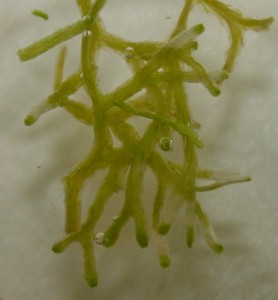
Gametophyte
Overall Structure:
The bluish green thallus of R. fluitans is ribbon-like, narrow and flat. The dichotomously branching thalli can spit 2-6 times; each fork forming two nearly equal lobes at the tip.
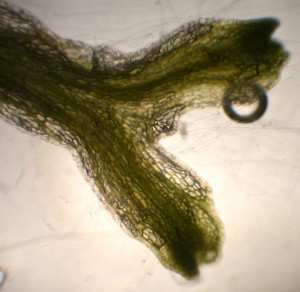
Riccia fluitans dichotomous branching
As the gametophyte keeps branching, it begins to form interconnected chains that results in a tangled mass.
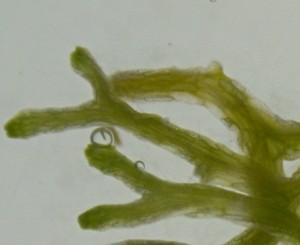
Thallus:
The small thalli of R. fluitans are bluish green when wet but become papery and dark green when dry. The presence of air chambers can be seen by making a cross section of the thallus.
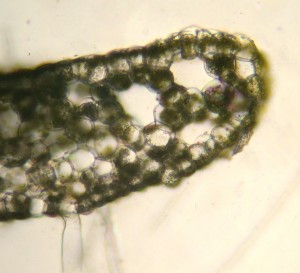
Riccia fluitans – thallus cross-section
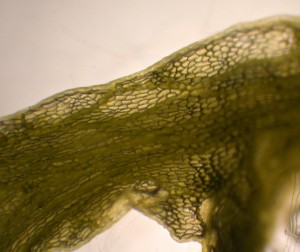
Surface view – air chambers visible
Rhizoids:
Riccia fluitans is a species that lack scales, but has rhizoids.
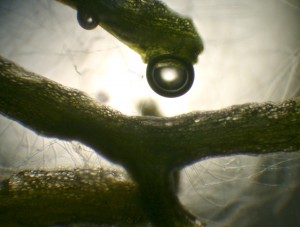
Sporophyte
The internal sporangium is a very distinctive characteristic. The sporophyte remains within the thallus until it is exposed following the decomposition of the thallus.
Vegetative Reproduction
Fragmentation of the thallus is commonly found in Riccia fluitans. It occurs when adventitious branches are formed on the mid-ventral surface of the thalli. These branches detach from the gametophyte and develop into new thallus.
